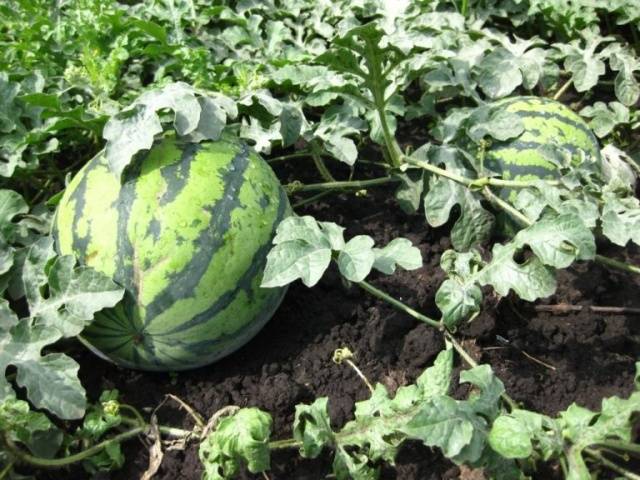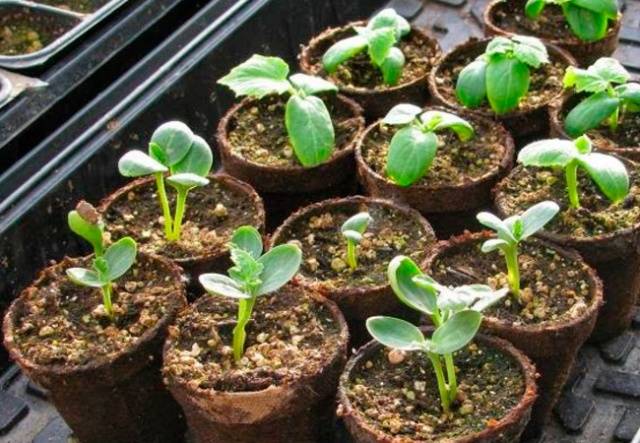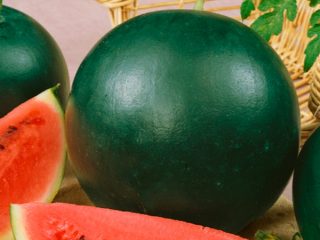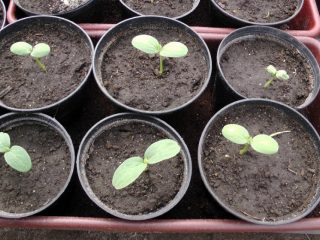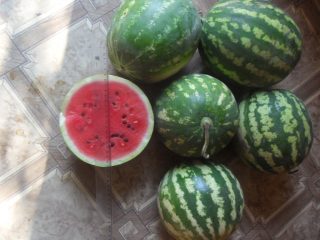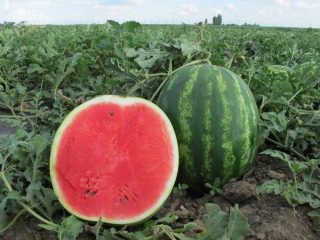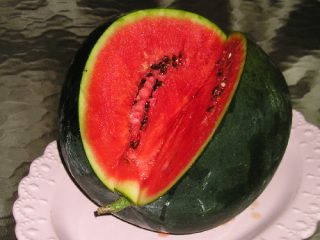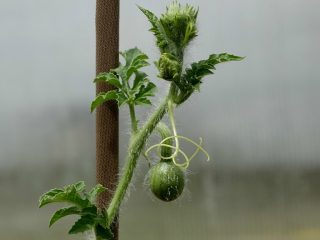Content
You can grow watermelons in Siberia. Siberian gardeners have proved this with their many years of experience. They were helped by local breeders who adapted new varieties of watermelons for Siberia to the conditions of middle latitudes and the Siberian short summer. Regionalized watermelon hybrids tolerate climatic instability of weather well in areas with fast spring and rapid summer period. The inhabitants of Siberia and the adjacent territories have learned to get good harvests from their watermelon plantations not only for themselves, but also for the sale of the most delicious and rare wonderful berries in Siberia to the population.
Watermelons for Siberia
Siberia is rich not only in minerals, but hardworking and stubborn gardeners live in it, who do not want to retreat before the harsh climatic conditions of their region. Using modern technologies and inventions in the field of agriculture and plant growing, they achieve stable yields in their gardens and orchards. Many crops, seemingly unsuitable for growing in the cold climate of Siberia, have successfully taken root and give a rich harvest even in such conditions. One of them is watermelon - a thermophilic and capricious fruit, which was previously grown only in the south of the country.
Choosing a variety
One of the main conditions for growing watermelons in Siberia is the correct choice of variety. A lot depends on this, because if a variety is adapted to grow in the south, it will not have time to ripen in the north. It is worth considering the timing of ripening, or rather, the duration of the growing season of the watermelon. You need to choose varieties with an early, even super early ripening period, and a short growing season.
Siberian breeders are constantly working on breeding varieties of watermelons for Siberia that meet exactly these requirements. It is necessary to add to this some other requirements that the varieties of Siberian breeding watermelons must have:
- increased resistance to weather changes, low sensitivity to cold snaps;
- the beginning of flowering and fruiting is not prolonged in terms of time, that is, a quick change in flowering and the appearance of ovaries;
- shortened terms of ripening of watermelon to market ripeness;
- preservation of taste and useful qualities;
- strong but not thick skin.
Watermelon variety for Siberia | Ripening terms | Vegetation period / days / | Fruit weight / kg / (middle) | a brief description of | Landing time | |
greenhouse | open ground | |||||
"Siberian" | ultra-early maturing | 75-85 | 4-5 | The fruits are round, the flesh is bright red, sweet and juicy, the peel is dark green, thin. | April | May |
Crimson Sweet | mid-early | 85-90 | 5-12 | The fruits are large, oval. The skin of the watermelon is thin, striped - green alternating with light green stripes, the pulp is raspberry, the seeds are small in small quantities.
| End of April | The end of May |
"Sugar baby" (Suga baby) | ultra early | 75-80 | 1-1,5 | The fruit is spherical, the skin is dense, thin, dark green with dark stripes, the flesh is very sweet. | April | May |
"Chill" | mid-early | 85-96 | 4,5-5 | The lashes of a watermelon grow up to 5 meters in length, the fruits are in the form of a slightly elongated ball, the flesh is pinkish, granular, the seeds are large. | Early April | May |
"Superearly Dyutina" | Record holder of ultra-early ripening varieties | 58-62 | 4-6 | The bushes are compact, the lashes reach 2 meters in length, the crust is striped, the flesh is reddish, the fruits are not stored for a long time (no more than 1 month). | End of April | The end of May |
"Siberian Lights" | Early ripening | 77-95 | 1-2,5 | A high-yielding, disease-resistant watermelon variety. Fruits are medium-sized, dark green in the form of a ball. The pulp is loose, reddish and juicy. | April | May |
The table shows a far from complete list of watermelon varieties suitable for cultivation in Siberia, the Urals and in areas close to them in climatic conditions.
Here you will find the most suitable seeds for growing in the area where you live. You should not order seed in the south if you live in the north of the country.
Growing seedlings
Summer in Siberia is short, but it can be quite dry and hot. These conditions are very suitable for growing watermelons even outdoors. But not all varieties of watermelon have time to ripen during the summer period of time, so gardeners sow seeds in April in heated greenhouses or at home in order to grow strong and healthy seedlings by the beginning of the season.
Seedling method of growing watermelons in Siberia the most popular, in this case, the terms of ripening of fruits to the desired ripeness are reduced. The fruits of watermelons begin to ripen at the end of June, and in July-August they ripen completely. In greenhouses and in open areas under a film cover, seedlings can be planted in May.
Sowing watermelons for seedlings in Siberia begins 3-4 weeks before the date of their intended planting in the ground. The gardener Tatyana Vasilyeva tells in more detail about sowing seeds in the video, which you can watch at the end of the article section. For those who prefer to read rather than watch, we recommend the following order of this operation:
- Sort all the seeds, remove broken or deformed ones, soak for disinfection and prevention of fungal diseases in a soda solution (for 100 ml of water, 5-8 g of baking soda). The holding time is about 30 minutes. Then drain the solution, remove the seeds floating on the surface (they are empty), rinse and put on a damp cloth. Previously, the soaking procedure was carried out in a weak solution of potassium permanganate, but today it will be difficult to purchase it in pharmacies, so gardeners can also successfully use a soda solution or a solution of furacilin.
- Watermelon seeds should germinate within 1-2 days. After this period, if some of the seeds did not open and did not release the roots, try manually opening the sharp ends of the seed, that is, open the upper part. Use small tweezers or scissors to do this.
- Prepare containers for sowing watermelon seeds, disinfect them if you are using it not for the first time. Place a layer (1 cm) of drainage material on the bottom: fine pebbles, coarse sand, brick chips, eggshells. From above, 2/3 of the container high, you need to pour out the soil sifted through a sieve so that its structure is loose and light.
- Pour the entire soil with hot water (you can add a special growth stimulant), after absorbing, make small indentations for each watermelon seed.
- Place the seeds in containers, cover them with glass or plastic wrap, put them in a warm place (not lower than + 25 ° С). Water from time to time with a little warm, preferably thawed, water.
Watermelon seedlings for Siberia will be ready for planting in the ground within 3-4 weeks.
In this case, there will be no need for picking seedlings in separate pots, which significantly delays the development of the plant.
Transfer to the greenhouse
Ordinary greenhouses for summer cottages are small in size, it is impossible to grow many watermelons in them, therefore gardeners use the vertical method of planting watermelon seedlings in greenhouses, that is, they strengthen the shoots' lashes on supports and trellises, and the fruits are placed in special thin, but strong nets, they are tied up on small posts or ceiling grids.
The diagram below this paragraph clearly reflects the width of the watermelon seedling bed (90 cm), the distance between the seedling bushes (70 cm) and the intermediate row spacing (50 cm). This scheme is considered the most optimal for growing watermelons in a greenhouse. The procedure for planting watermelon seedlings is as follows:
- in the greenhouse, they prepare the seats: they apply fertilizers to the soil, dig up and water the soil 2 weeks before planting the seedlings (or in the fall);
- for each bush, seedlings dig a hole (see diagram) a little more than 30 cm deep, watered again;
- watermelon seedlings are taken out of the pot, trying to preserve the entire clod of earth, for this, the seedlings must be watered before excavation;
- a plant with a lump is placed vertically in the hole and added dropwise;
- the soil from above is mulched with bark (crushed);
- install trellises or supports.
If the seedlings of the watermelon are already quite tall, remove the first stepsons and pinch the main stem. As the seedlings grow, 2 or 3 shoots are selected, the rest (weak or poorly growing) are removed. In the future, constant care for the seedlings of watermelons is carried out:
- water the seedlings only with warm water warmed in the sun;
- seedlings are fed 2-3 times a month;
- remove weeds, loosen the soil;
- carry out prevention and control of diseases and pests (if necessary).
Do not forget about regular airing of the greenhouse, watermelons love warm and fresh air.
Landing in open ground
The technology of planting watermelon seedlings for Siberia in open ground is not much different from greenhouse planting. The main difference is the shift in the dates of disembarkation by a month, if the disembarkation is carried out in the greenhouse in April, then watermelons are planted on open melons only at the end of May or at the very beginning of June.
At the end of the paragraph, a video is posted where an experienced melon grower from Siberia talks about planting watermelons in open ground using his own method. And we provide our readers with written recommendations for planting seedlings on a garden melon:
- In the fall, you need to prepare a site for your future melon: apply fertilizers, dig up the ground.
- In the spring, we dig up the soil again 2 weeks before planting the seedlings. The soil for watermelons should preferably be sandy, light and loose.
- We dig holes according to the above scheme.
- We spill it with water, you can add a little growth stimulant so that the seedlings adapt faster in a new place.
- Carefully remove the seedlings from the planting container (together with a lump of substrate) and place the watermelon sprout in the holes. We mulch the surface with humus, compost, peat.
Melons will not require special care for watermelons, all procedures are usual: watering, feeding, loosening and removing weeds. In Siberia, the summer can be cold; in this case, it is necessary to provide for warming of plantings, especially at night. Install simple arcs and prepare a plastic wrap, you can use pieces of roofing material or slate, old linoleum for insulation.
Conclusion
Watermelons in Siberia are no longer a curiosity, as it was quite recently. Residents of these regions do not need to wait for the time when this delicious fruit ripens in the south and will be brought to local markets and shops. Siberian gardeners successfully grow them on their backyards and use the earliest, and most importantly, ecological pure miracle berries.
